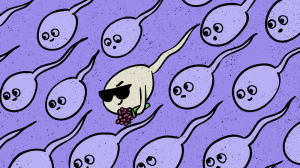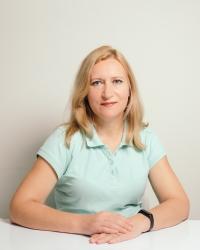For decades, it was believed that the sperm cell is the main hero of fertilization — imagined as a little “athlete” competing with its “peers” to be the first to reach the passive egg cell. However, scientific research shows that in reality, the egg actively chooses, using chemical signals and complex mechanisms to decide which sperm to accept. Despite scientific evidence, the myth of the passive egg and the “winning” sperm persists, fueled by stereotypes and gendered narratives.
The origin of the sperm race myth
For a long time, biology textbooks, documentaries, and even school lessons depicted fertilization as an epic race. Millions of sperm cells, it was said, simultaneously set off in an evolutionary marathon, striving to capture the single prize — the egg. The egg was portrayed as motionless and passive, waiting for “the fastest and strongest.” This seemingly intuitive image took root in popular culture, as it fit deeply ingrained stereotypes: the male as active and competitive, the female as receptive and helpless. However, beginning in the 1980s, research began to radically challenge this view.
Biology tells us a different story. The oocyte is far from a passive target. Thanks to its zona pellucida, a complex protein coating, the oocyte can recognize and “test” the sperm cells that come into contact with it. Some are rejected, while others are accepted based on still not fully understood criteria, including quality and genetic compatibility. Moreover, studies conducted between 2017 and 2020 have shown that the oocyte can emit attractive chemical signals. These signals differ from case to case, as some oocytes attract only specific sperm cells. This mechanism, observed under laboratory conditions, highlights how active and complex the selection process truly is.
Why is the oocyte selective?
To understand why oocytes became so selective, we must turn to evolution. Fish, amphibians, and reptiles produce hundreds or thousands of eggs and sperm, relying on the “numbers game.” Many embryos do not survive, and only a few reach maturity. Mammals, however, have chosen a different strategy: less offspring, but higher survival rates. In this model, it is crucial that every conception occurs using the best possible genetic material. Hence the central role of the egg — not to let “just anyone” in, but to choose the most suitable sperm. This selection ensures that if years are invested in raising a single offspring, it begins with a strong biological foundation.
Cultural resistance to the new paradigm
Despite the accumulation of scientific evidence, the idea of the heroic sperm continues to dominate books, articles, and the collective imagination. This phenomenon has cultural roots: many scientific narratives, especially in the past, were shaped by gender stereotypes. Describing the egg as passive and the sperm as active reflects social values rather than biological reality. Even today, scientific papers speak of “unexpected discoveries,” repeating that it is the egg that makes the choice — almost ignoring decades of established research. Accepting biological reality means dismantling a deeply rooted cultural prejudice: the female body is neither weak nor passive, but endowed with fine-tuned mechanisms of control and selection. The conclusion: the egg chooses the sperm.
The image of a tiny runner winning a race belongs more to culture than to biology. Recognizing the active role of the egg is not just a scientific nuance — it is a step toward understanding the complexity of the female body. Debunking the myth of the sperm race restores scientific truth to its rightful place: human reproduction is a process of choice and selection, guided by complex biological mechanisms that give life the best chance for a healthy beginning.
Number of views: 509



















